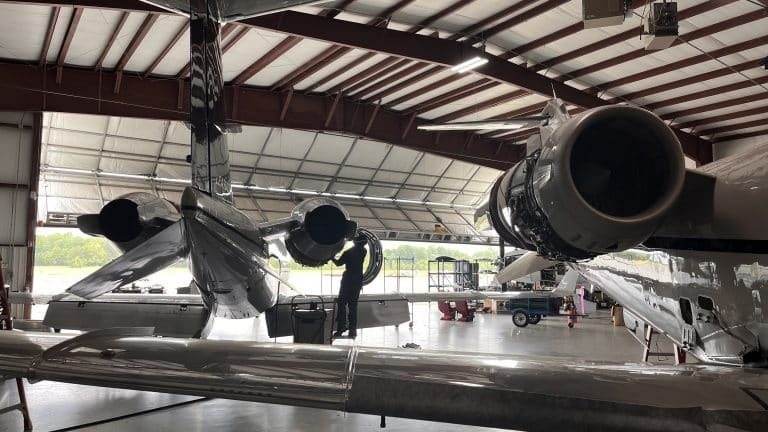In aviation, meticulous maintenance is crucial for keeping aircraft operating at their best, ensuring safety, and extending the lifespan of critical components. From routine inspections to intricate repairs, each step in maintenance plays a role in delivering top performance in the air. But beyond the basics, certain practices can greatly enhance maintenance outcomes, keeping aircraft in optimal condition even under demanding conditions. By focusing on quality materials and effective techniques, aviation maintenance can be both efficient and reliable. Here are three essential tips to ensure optimal performance in aviation maintenance.
1. Choose the Right Grease for Every Condition
When it comes to aviation maintenance, selecting the appropriate grease is one of the simplest yet most impactful decisions. Aircraft components operate under intense pressures and in a wide range of temperatures, so using the right type of grease helps reduce wear and prolongs the life of essential parts. Grease designed specifically for aviation offers superior protection against high temperatures, moisture, and friction, which are all common stressors for aircraft components. When you match the right grease to the environmental and operational demands, you’re effectively reducing corrosion and ensuring smoother, longer-lasting performance. Choosing high-quality grease designed for aviation applications also minimizes the risk of costly breakdowns.
Another benefit of using the correct grease is that it simplifies maintenance by preventing unnecessary component wear, saving time on frequent repairs or replacements. Quality greases remain stable under varying conditions, making them ideal for components that experience drastic temperature fluctuations during flight. For example, aviation grease offers the durability and reliability that standard greases cannot provide, making it a valuable asset in any maintenance routine. Investing in the right grease supports both the performance and longevity of your aircraft, making it a foundational component in effective aviation maintenance.
2. Establish a Routine for Regular Inspections and Maintenance
A consistent inspection schedule is the backbone of any effective maintenance program, catching small issues before they become major problems. Routine inspections allow technicians to assess wear and tear on components, ensuring that each part is operating within safe limits. By identifying issues early, you’re not only keeping the aircraft in peak condition but also avoiding unplanned downtime and unexpected repair costs. Inspections help maintain optimal performance by identifying components that need adjustment or replacement, ensuring that every flight is as safe and efficient as possible. Staying on top of inspections means fewer surprises and a greater chance of catching issues when they’re easiest to fix.
Regular maintenance schedules also reinforce safety standards and keep your operation compliant with regulatory guidelines. Following an established maintenance routine helps technicians track the condition of every part over time, providing insights that can inform future maintenance decisions. Scheduled inspections can range from checking basic components to deeper system evaluations, depending on the aircraft and its usage patterns. By keeping inspections regular, you’re prioritizing the well-being of your aircraft and making sure it’s equipped for any mission, regardless of distance or conditions. Consistent attention to detail ensures that no part of your aircraft’s maintenance is overlooked.
3. Use High-Quality, Specialized Tools and Equipment
In aviation, the tools you use are just as critical as the techniques applied. Specialized tools designed for aircraft maintenance are essential for achieving precise, reliable results without compromising the integrity of any components. When technicians use high-quality tools, they’re able to perform maintenance tasks with greater accuracy, reducing the risk of error or damage. These tools are built to meet the rigorous demands of aviation maintenance, delivering exact fits and torque where needed, which is essential for high-performance aircraft. By choosing tools designed specifically for aviation, you’re enabling technicians to perform their best work with confidence.
Using specialized equipment also improves efficiency, making it possible to perform maintenance tasks more swiftly without sacrificing quality. Well-engineered tools reduce wear and tear on both the aircraft and the tools themselves, which helps keep long-term costs down. Additionally, having access to the right equipment allows maintenance crews to address a wider range of issues, from simple fixes to complex adjustments, with ease and precision. High-quality tools and equipment make the maintenance process smoother and more effective, ensuring that every part of the aircraft is in optimal condition for its next journey.
Conclusion
Optimal performance in aviation maintenance requires a proactive approach, attention to detail, and the right materials and tools. By selecting the correct grease, following a regular inspection schedule, and investing in specialized tools, you’re building a solid foundation for effective, efficient maintenance. These essential practices not only enhance safety but also support the long-term reliability of your aircraft. Quality maintenance goes hand in hand with exceptional performance, giving both operators and passengers peace of mind. Embrace these tips to keep your aircraft performing at its best and ready for the demands of the skies.
